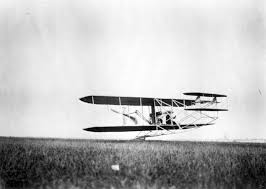 Rescued from a copy of The Odd Volume, a one-off literary miscellany published in 1910 to raise money for the National Book Trade Provident Society, is the following poem by Norman Davey entitled “Aerial Survey (no 3498 K).”
Rescued from a copy of The Odd Volume, a one-off literary miscellany published in 1910 to raise money for the National Book Trade Provident Society, is the following poem by Norman Davey entitled “Aerial Survey (no 3498 K).”
Back from Sahara’s sun-scorched sand,
With its dome of shimmering blue:
Back from beyond Van Dieman’s Land
Where the pack-ice breaks the view :
Back from the glow of the sun-kissed snow
On Fuji Yama’s crest;
We have fled from the grey of the dawning day
—Fleeter than falcon for its prey—
Home to the winsome West,
My Boys!
Back to the winsome West!
What though the East be “calling” yet,
From Khiva to Mysore:
Down from the highlands of grey Thibet
To the Straits of Singapore;
What though the maid ‘neath the temple’s shade
Sing soft her sweetest lay—
We have no care for anything there,
Who crave but to see how our kinsfolk fare,
While eighteenth months away,
My Boys!
Full eighteen months away!
We have broken the hush of the Southern Night
With our engine’s stuttering bark,
As we sped ‘neath the glow of the moon’s pale light
Where the coral reefs loom dark;
We have nuzzled through, while the snow-storms blew
And cased our wings with ice—
Till we didn’t know where in the deuce we were,
As we pitched and drove through the frozen air—
Oh, it ain’t so bloomin’ nice
My Boys!
It ain’t so bloomin’ nice !
We have left the warmth of the tropic creeks
For the North in a “ non-stop” run,
Till we sighted Spitzbergen’s frozen peaks
In the sheen of a midnight sun;–
Pay that each screw runs tight and true,
Through this waste of sea and sky!—
If our valves work slack while we’re off the track,
Only the wind can get us back,
Or else we stay and die,
My Boys!
Or else we stay and die!
We plotted a cyclone’s zigzag course
From Rome to Buenos Aires,
Till we read the reed of its final force
By the light of the Northern Fires;
We marked the place of the whirlwind race,
By the roll of the Arctic swell—
Till we swung abaft of a wrecker’s craft
And sent—with the help of a steel-shod shaft—
A hundred men to hell,
My Boys!
A hundred men to hell!
More than a year and a half ago,
With a north wind blowing hard,
We dived through a smother of driven snow
From the Aerial Survey Yard;
With our wings as white as a snowy night,
We swept down Plymouth Sound;
To follow our reed to its written screed—
Round the world at a break-neck speed—
Three men and a mongrel hound,
My Boys!
Three men and a mongrel hound!
Back from the Lands of the Rising Sun,
A thousand miles behind,
We fly—with our journey all but done—
For the home of the Western wind;
What if you laugh at the permanent staff
Of “3-4-9-3-K”
Unless we’re dead on the Steppes instead,
We’ll paint old London flaring red,
And give you a hectic day,
My Boys!
Oh, such a hectic day!
The poem is interesting for a number of reasons. When he submitted the piece, Davey was a twenty-year old undergraduate at Cambridge, where he was studying Natural Sciences while also co-editing Granta. When he left college he was already known as a student poet, but possibly to please his engineer father, he began to study engineering. At the age of just 24 he published a pioneering monograph entitled The Gas Turbine, which was well received. His debut novel, Perhaps: a Tale of Tomorrow, had already been accepted for publication by Methuen, but never appeared. In 1921 his most successful novel, The Pilgrim of a Smile, came out, to be followed by many more works of fiction. In the meantime Davey published other works on engineering. He died in 1949, aged 61.
The poem shows, not only Davey’s knowledge of the internal combustion engine and a passion for the idea of flying, but also his admiration for Kipling, for Three Men and a Boat and Around the World the World in Eighty Days. There are also precocious literary skills and an unusual prescience and depth of imagination for someone of just twenty years of age who had probably never flown himself. Possibly inspired by the pioneering aerial survey by Orville Wright, which had taken place in 1909, it may also be one of the earliest, if not the earliest, poems to celebrate the joys of flying. [R.M.Healey]
